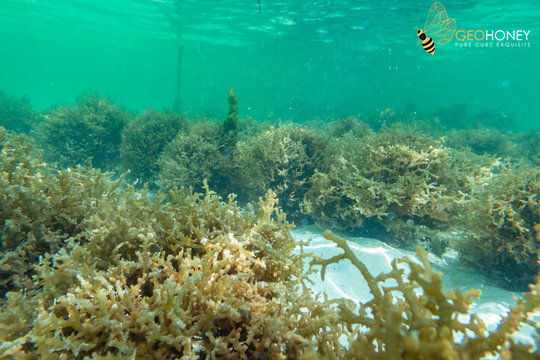- Tokyo: 08:40
- Singapore: 07:40
- Dubai: 03:40
- London: 23:40
- New York: 18:40
Seaweed Industry Could Reduce Land Needed for Farming by 110 Million Hectares?

A new study has found that an area of ocean almost the size of Australia could potentially support commercial seaweed farming worldwide. The research suggests that if seaweed farming could constitute 10% of human diets by 2050, it could reduce the amount of land needed for food by 110 million hectares (272 million acres), an area twice the size of France. However, the study also notes that there are a range of potential negative impacts on marine life that will need to be balanced with the benefits of a global seaweed farming industry.
The study looked at 34 different species of seaweed and where they could feasibly grow and then narrowed this down to places with calm enough waters and close enough to populations where farms could be established. A total of 650 million hectares (1,606 million acres) was identified as plausible for seaweed farming, with the largest areas in Indonesia and Australia, which both have large ocean regions under their economic control.
The authors of the study, published in Nature Sustainability, argue that cultivating seaweeds for food, feed, and fuel within even a fraction of the 650 million hectares of suitable ocean could have profound benefits to land use, emissions reduction, water and fertilizer use. Scott Spillias, a researcher at the University of Queensland in Australia who led the study, said: "People around the world are looking at the ocean as this big ‘untapped’ resource and asking if we should be using more of it."
One of the biggest benefits of seaweed farming, the study suggests, would be the cultivation and use of red Asparagopsis as a cattle feed supplement, which has been shown to result in drastically lower methane emissions from cows. One supplement based on the seaweed reportedly went on commercial sale to farmers in Australia last year. The study suggests that cuts to methane emissions from using Asparagopsis could save 2.6 billion tonnes of CO2-equivalent per year by 2050, which is about the same as the current greenhouse gas footprint of India.
Spillias added that introducing more seaweed into human diets could also deliver benefits. In parts of Asia, seaweed makes up 2% of diets, but scaling this up to 10% globally could spare 110 million hectares of land currently used for growing food. "Basically this is just people eating more vegetables,” he said. “If we grow seaweed, the best thing to do is for people to eat it rather than feed it to livestock, but that’s going to need some big cultural shifts."
The authors of the study, from Australia and Austria, said more work is needed to understand the costs and benefits of any boom in seaweed farming, but “the magnitude of potential benefits supports the notion that seaweed farming in the ocean can play a pivotal role in our response to global sustainability challenges."
However, the study also notes that there are potential negative impacts that will need to be taken into consideration. A review in 2019 of the risks of expanding seaweed farming in Europe highlighted concerns that farms could upset the balance of marine ecosystems and could alter the way water around coastlines moves. Spillias said: "Converting even a few million hectares means a huge amount of development. We are modifying habitats and introducing materials to places where we haven’t before."
He added that if there was a widescale push globally for seaweed farming, there could be social implications as well. "Marine industries do not have a great reputation on human rights and if we’re farming seaweed largely out of sight, then we need to think of the people in these industries and make sure they’re being fairly treated.



